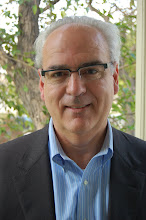T.C. had been neglected from infancy. Lacking in self-esteem, she had no hygiene or self-care abilities, and reacted with angry resistance to all efforts aimed at parenting her. Through patience, kindness and structure, her cottage staff achieved remarkable results and T. developed not only age-appropriate social skills, but a sense of her self-worth.
Admitted 3/27/03 and discharged 5/17/05; readmitted 11/02/05 and discharged 7/21/06; readmitted 11/19/07 and discharged 6/27/08. Hillsides staff was not in favor of any of these discharges. T is very unstable. She was discharged the first two times to a previous foster mother who was very uncooperative and was not amenable to services either before or after discharge.
During the third stay at Hillsides, a P3 worker located relatives of her mother in Pennsylvania. T had never met these people. DCFS sent her for a visit on Spring Break in 2008, and by 6/08, had cleared the home as an acceptable placement. Our request to keep her bed open was denied. In less than 2 weeks, the relatives called child services in Pennsylvania and they removed her from the home. Shortly thereafter, she was returned to California and is currently living in a foster home in Los Angeles County. The Los Angeles County Department of Children and Family Services child social worker made it clear upon our inquiry that Hillsides was not an option for placement again. We have no reason to think she will be any more successful in this home than in the others.
REFLECTION
1. Back in 2003, LA DCFS should have conducted a TDM that would address her needs and the support services she would need in transitioning to a new placement. (A TDM meeting is an opportunity for all interested parties in the life of the foster care child to convene and address his discharge and treatment plan for a successful replacement.)
2. The County should never place a child with a foster home that will not be open to supportive services.
3. When considering a new placement out of state have some graduated visits which get longer each time to determine the suitability of the fit. Note, this might be expensive, but would cut down on the trauma of the child involved.
Supervisors comment:
This was a very unstable plan. I am worried about the outcome. This mother has a history of serious problems, and she had very little in the way of pre-placement services. She is also extremely resistant and suspicious, making it difficult for her to make use of the services that were offered.
CONCLUSION
1. Family involvement in the treatment process is a key factor.
2. A plan for discharge agreed by all parties, Hillsides, LA DCFS, the child and the family is necessary for a successful transition. (A plan is not going to work if the child or the receiving party is saying they are not ready.)
3. We should consider mandatory supportive services in the home.
4. Once a plan has been agreed upon, there should be some benchmarks set to determine the move-in date.
5. As a general rule, the residential treatment agency should provide Wraparound services to the receiving family where ever possible, since they are the ones who know the child and the family. (This would entail an exception to the Service Provider Areas (SPA) specific structure of the Wraparound program, since most residential treatment centers do not have Wraparound programs in all the SPAs.)
Monday, March 16, 2009
The Final Story in a Series of Seven Stories
Subscribe to:
Post Comments (Atom)



No comments:
Post a Comment